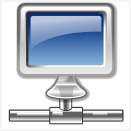
During its earnings report on Wednesday, the world's largest chip maker said it quietly pushed the first shipments of its Core 2 Duo desktop processor out the door last quarter, ahead of its formal launch on July 27.
"The mobile PC version of the Intel Core 2 Duo processor is also shipping now, one month ahead of schedule," the company wrote in a set of presentation slides.
Indeed, a report from overseas this week had suggested that Intel would advance the releases of Merom to coincide with Conroe in late July. Intel has scheduled the official launch for both chips for next Thursday.
Intel hopes the new lines of dual- and quad-core chips will help stem market share gains by AMD and aid its bleeding shares, which have lost about a third of their value in the last 12 months.
Apple Computer, which recently switched its Mac line to Intel chips, is likely to adopt Conroe and Merom Core 2 Duo processors in future revisions of its desktop and notebook computers.
Apple's MacBook Pro notebooks currently employ Intel's Yonah Core Duo processors. Since Merom was designed to be backwards compatible with Yonah platforms, Apple's first move could come in the form of an abrupt boost to its professional laptop line.
AppleInsider
What are your bets for the ETNM (Estimated Time to New Mac)?
- Read more...
- 24 comments
- 8,029 views






